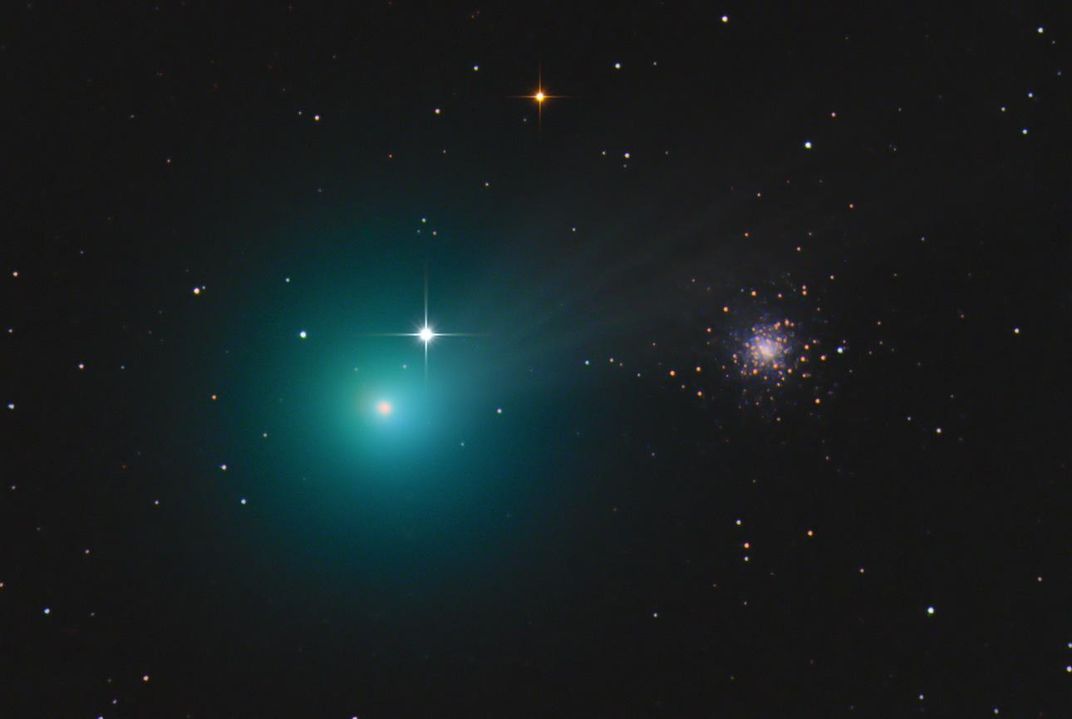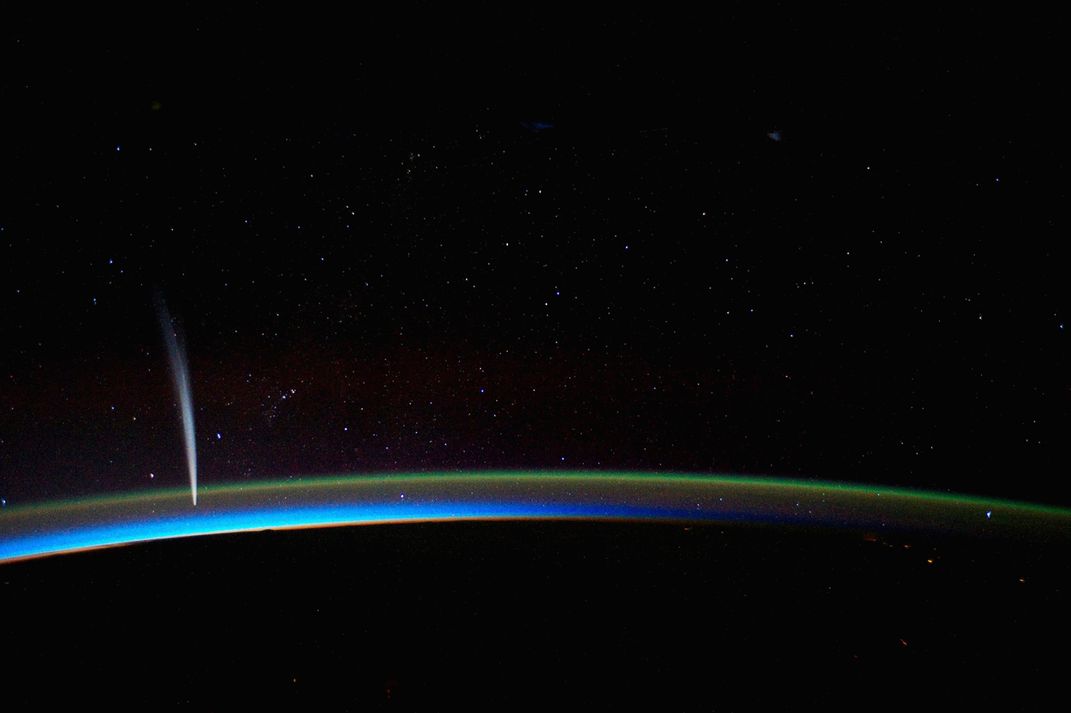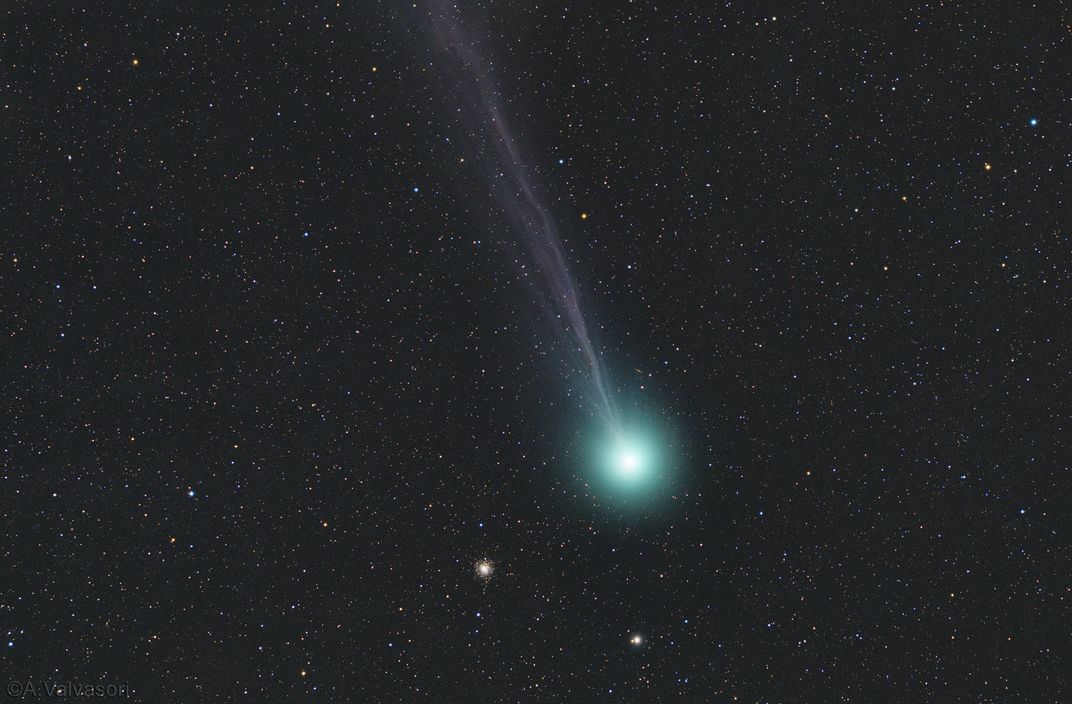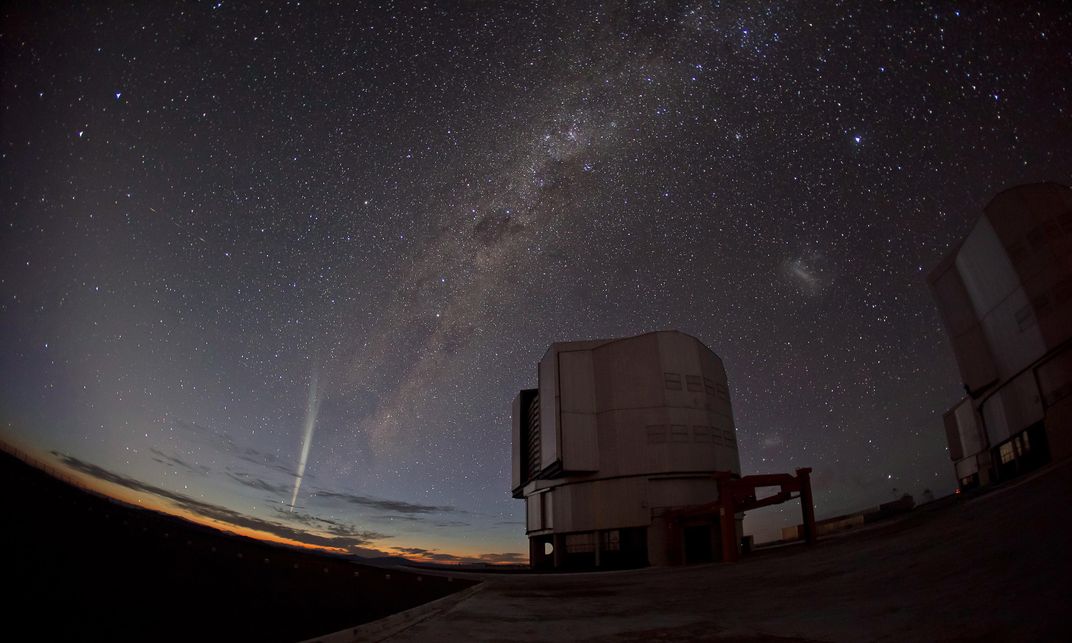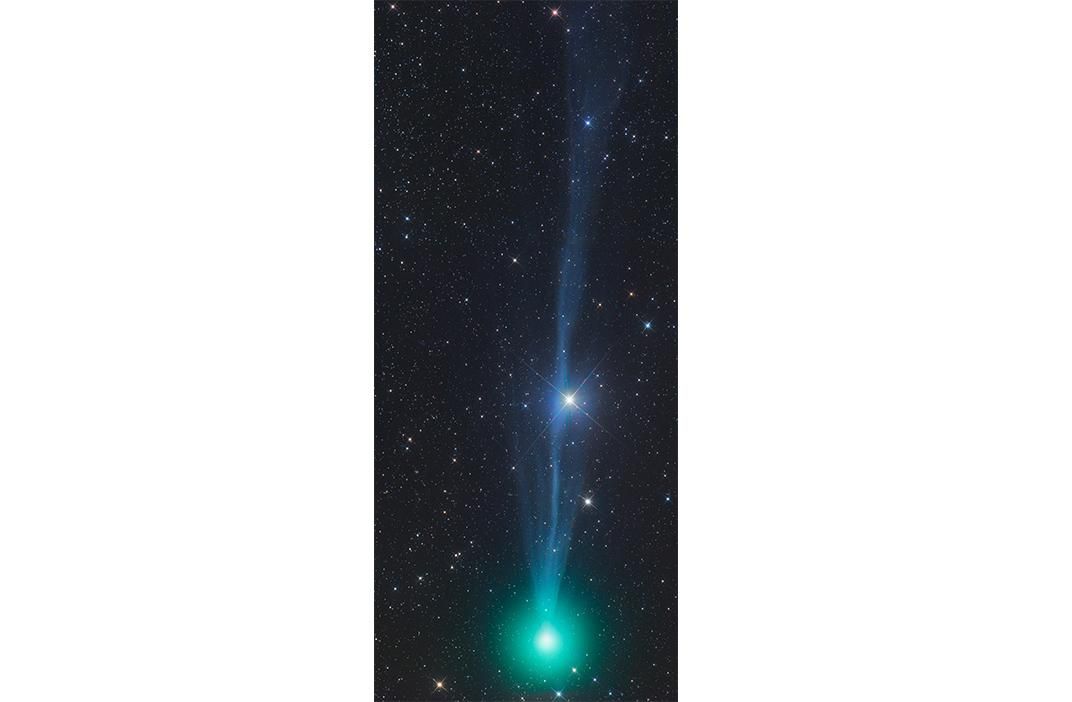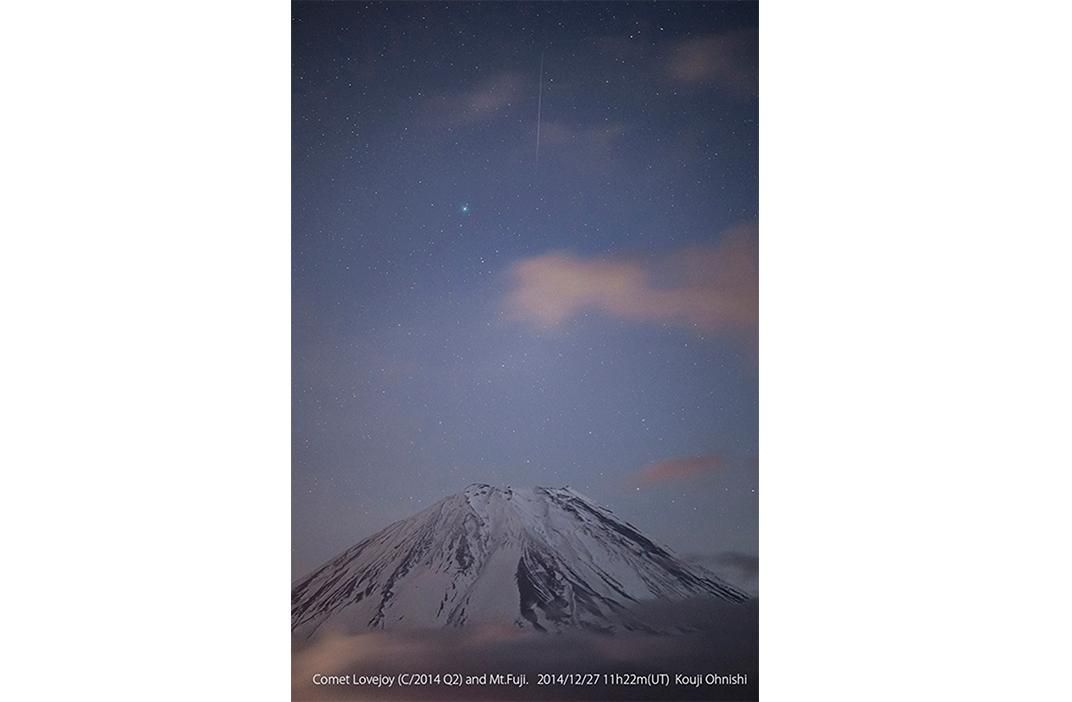How to See This Green Comet With the Naked Eye
The “New Year’s Comet” is taking astronomers by storm with an unexpected showing, and it should only get brighter through early January
Terry Lovejoy is one hardworking comet hunter. The amateur astronomer based in Australia has been discovering new comets since 2007, and is perhaps most famous for first spotting the icy body known as C/2011 W3—aka, the Great Christmas Comet of 2011. That comet roared to life as it made a close pass by the sun in late December, becoming almost as bright as the planet Venus and putting on stunning displays for sky-watchers in the Southern Hemisphere.
Now Lovejoy is at it again, and his latest find—formally known as C/2014 Q2—has already been dubbed the New Year's Comet of 2014. (As with his past discoveries, C/2014 Q2 is also being called Comet Lovejoy.)
The New Year's Comet is getting brighter as it moves closer to the sun, because the increased heat is causing its ices to vaporize and release gases and dust, forming a brilliant hazy head and a faint, spiky tail. Astronomers originally predicted that Comet Lovejoy wouldn't get bright enough to be visible to naked eyes. But in a holiday surprise, the comet's glow has been rapidly intensifying, and it is now easily visible with binoculars even from urban areas, where light pollution makes all but the brightest stars difficult to spot.
In rural places where the skies are clear and very dark, viewers should now be able to see Comet Lovejoy without any optical aids—look for a green fuzzball a bit below the "belt" of the constellation Orion. The comet appears green because it is releasing cyanogen gas and a type of carbon gas, which both fluoresce when exposed to sunlight.
Lovejoy discovered C/2014 Q2 comet in August, and astronomers around the world have been tracking its movements since then. Gareth Williams at the Harvard-Smithsonian Center for Astrophysics even found the comet in archived pictures taken before its discovery and used them to help track its orbit. He calculates that the comet will get closest to the sun on January 18, passing within 120 million miles of the solar surface. But it will pass closest to Earth on January 7, getting within 43 million miles. For context, our nearest planetary neighbor, Venus, is 25 million miles away on average.
Astronomer David Levy famously quipped that comets are like cats, "they have tails, and they do precisely what they want." He was referring to the notorious difficulty of predicting what a comet will do as it nears the sun. If Lovejoy keeps brightening at the same rate, it should put on its best show in the weeks after the close approach to Earth. In mid-January the full moon will be waning, reducing glare in the night sky and making the comet easier to see. According to Sky & Telescope, observers in the Northern Hemisphere should watch for the comet as it passes through the constellations Taurus and Aries, skirting southeast of the Pleiades star cluster.
The comet is traveling on a very elongated elliptical orbit, which means it swings far out into the depths of the solar system and only rarely visits our neighborhood. Its route suggests that this Comet Lovejoy has been here before, probably last passing near the sun about 11,200 years ago. As it heads away from Earth in February, the gravitational pull of other objects it passes will drain some of its orbital energy, shortening the comet's path. But we still won't see it again for at least another 8,000 years, astronomers predict. Here's hoping Terry Lovejoy finds yet more cometary wonders for us to admire in the meantime.
Editor's Note: This article has been updated with the latest estimates for the comet's closest approach to the sun and its orbital period.
